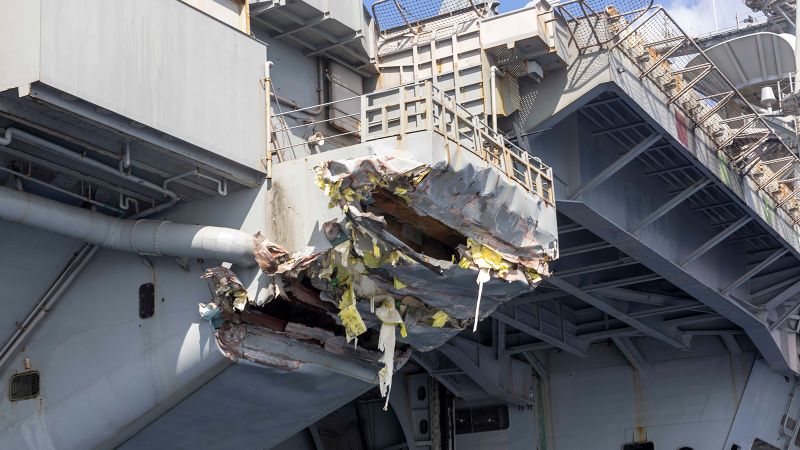US Navy Aircraft Carrier Sustains Damage in Collision
New photos show damage to US aircraft carrier after collision

New photos have emerged showing the extent of damage suffered by a US Navy aircraft carrier after a collision with a merchant ship near the Suez Canal. The warship USS Harry S. Truman was docked at a naval facility in Greece for repairs following the incident. Let’s delve deeper into the details of the collision and its aftermath.
Damage Assessment and Repair Plan
Photos released by the Navy on Saturday revealed the damage to the exterior starboard quarter of the 1,100-foot-long nuclear-powered aircraft carrier. The damaged areas included the exterior wall of storage rooms, maintenance space, line handling space, fantail, and the platform above one of the storage spaces. Despite the damage, the Navy assured that the ship’s combat capability remained unaffected. A team comprising structural engineers and naval architects is currently conducting a detailed assessment of the damage to implement a repair plan. However, no specific timetable for the repairs has been provided by the Navy.
U.S. Conducts Airstrike on Houthis as Truman Strike Group Arrives in Region
Collision Details and Consequences
The collision occurred between the USS Harry S. Truman and the Besiktas-M, a Panamanian-flagged bulk carrier, in the crowded waters near the Suez Canal off Egypt’s Port Said in the Mediterranean Sea. While both vessels sustained damage, fortunately, no injuries were reported. The Navy highlighted the challenging conditions in crowded areas like the Suez Canal, where ships have limited room for maneuvering, requiring significant distance to stop. Former US Navy captain Carl Schuster emphasized the potential dangers of small navigation mistakes or delayed decision-making in such congested waterways.
Operational Status and Mission Continuity
Before the collision, the USS Harry S. Truman was engaged in combat operations in the Central Command region, conducting strikes against Houthi rebels in Yemen and launching airstrikes against ISIS in Somalia. Rear Adm. Sean Bailey, commander of the Truman’s carrier strike group, affirmed that despite the incident, the carrier group remains operational and committed to responding to any security challenges in the region. The mission of the group remains unchanged, demonstrating their dedication to maintaining security in a dynamic global environment.
